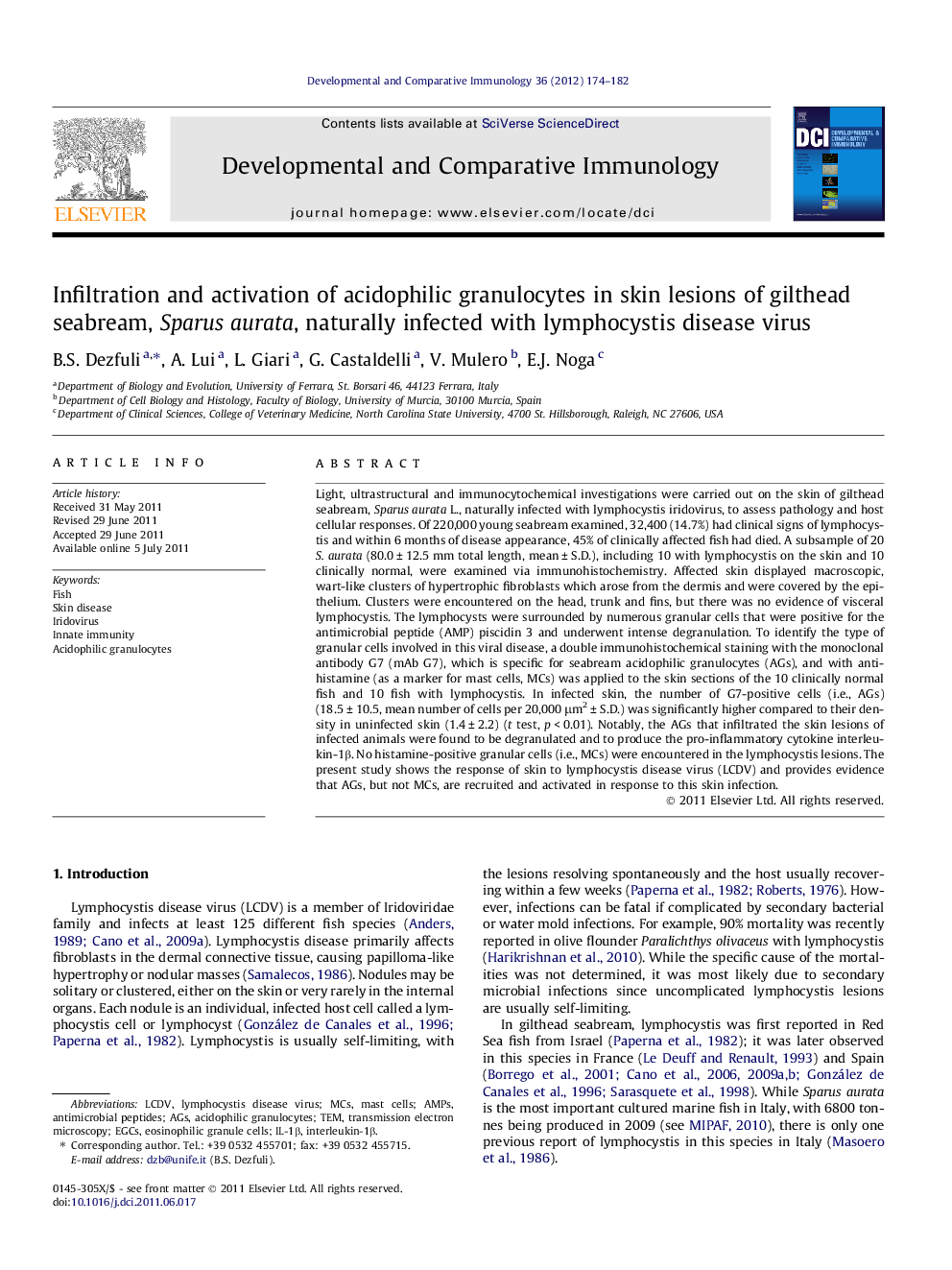| کد مقاله | کد نشریه | سال انتشار | مقاله انگلیسی | نسخه تمام متن |
|---|---|---|---|---|
| 2429411 | 1106494 | 2012 | 9 صفحه PDF | دانلود رایگان |

Light, ultrastructural and immunocytochemical investigations were carried out on the skin of gilthead seabream, Sparus aurata L., naturally infected with lymphocystis iridovirus, to assess pathology and host cellular responses. Of 220,000 young seabream examined, 32,400 (14.7%) had clinical signs of lymphocystis and within 6 months of disease appearance, 45% of clinically affected fish had died. A subsample of 20 S. aurata (80.0 ± 12.5 mm total length, mean ± S.D.), including 10 with lymphocystis on the skin and 10 clinically normal, were examined via immunohistochemistry. Affected skin displayed macroscopic, wart-like clusters of hypertrophic fibroblasts which arose from the dermis and were covered by the epithelium. Clusters were encountered on the head, trunk and fins, but there was no evidence of visceral lymphocystis. The lymphocysts were surrounded by numerous granular cells that were positive for the antimicrobial peptide (AMP) piscidin 3 and underwent intense degranulation. To identify the type of granular cells involved in this viral disease, a double immunohistochemical staining with the monoclonal antibody G7 (mAb G7), which is specific for seabream acidophilic granulocytes (AGs), and with anti-histamine (as a marker for mast cells, MCs) was applied to the skin sections of the 10 clinically normal fish and 10 fish with lymphocystis. In infected skin, the number of G7-positive cells (i.e., AGs) (18.5 ± 10.5, mean number of cells per 20,000 μm2 ± S.D.) was significantly higher compared to their density in uninfected skin (1.4 ± 2.2) (t test, p < 0.01). Notably, the AGs that infiltrated the skin lesions of infected animals were found to be degranulated and to produce the pro-inflammatory cytokine interleukin-1β. No histamine-positive granular cells (i.e., MCs) were encountered in the lymphocystis lesions. The present study shows the response of skin to lymphocystis disease virus (LCDV) and provides evidence that AGs, but not MCs, are recruited and activated in response to this skin infection.
► Acidophilic granulocytes (AGs) are recruited in seabream naturally infected with LCDV.
► Mast cells are not recruited to the lesions.
► Recruited AGs show strong degranulation and produce interleukin-1β.
► AGs are activated in response to LCDV infection.
Journal: Developmental & Comparative Immunology - Volume 36, Issue 1, January 2012, Pages 174–182